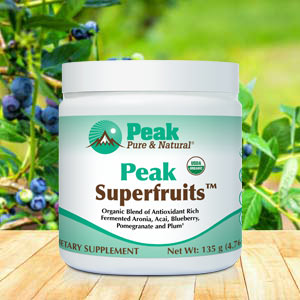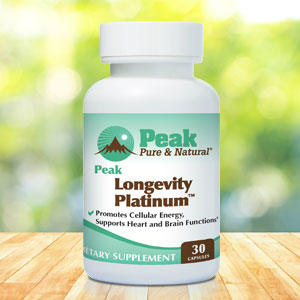Get Easy Health Digest™ in your inbox and don’t miss a thing when you subscribe today. Plus, get the free bonus report, Mother Nature’s Tips, Tricks and Remedies for Cholesterol, Blood Pressure & Blood Sugar as my way of saying welcome to the community!
What your get-up-and-go says about a sinister sign of aging

As my mom gets older, she often says she’s slowing down. I don’t see any signs of it myself — she still has some impressive get-up-and-go…
She does yoga every day and goes for long walks several times a week. Her pace may not be as brisk as it used to be, but isn’t that just a normal part of the aging process?
Maybe, but it doesn’t mean we need to sit back and wait to see what happens…
In recent years, changes in muscle function during aging have been tied to functional decline and frailty.
I think that’s something we’d all like to avoid as long as possible, especially considering what a decrease in muscle function can signal about the brain…
A sinister sign of late-life dementia
Muscle function isn’t just connected to the strength of the body. Over the years, it’s been tied to the health of the brain as well.
That’s why researchers in Australia decided to investigate the relationship between muscle function and dementia. Using data from a longitudinal study of aging on more than 1,000 women with an average age of 75, they measured the women’s grip strength and had them perform a timed-up-and-go (TUG) test.
A TUG test tracks the time it takes someone to rise from a chair, walk three meters, turn around and sit back down. Grip strength is just what it sounds like.
The tests were performed twice — once at the beginning of the study and again five years later to measure any loss of performance.
They also tracked the women over 15 years to monitor for any dementia-related hospitalizations or deaths. Almost 17 percent of the study participants experienced one of these events.
When comparing the data, the researchers found lower grip strength and slower TUG were significant risk factors for presenting with dementia. These risks were independent of genetic risk and lifestyle factors such as smoking, drinking alcohol and levels of physical activity:
- The weakest and slowest: Women with the weakest grip were more than twice as likely to have a late-life dementia event than those with the highest grip strength. And women who recorded the slowest TUG test were more than twice as likely to experience dementia as the quickest individuals.
- The biggest decline: Participants who experienced the biggest decline in grip strength over the 5 years were twice as likely to have had a dementia event compared to those who recorded the smallest decline in performance. And those with the largest drop in TUG speed over the 5 years were 2.5 times more likely to have experienced a dementia event.
- Risk of death: TUG performance also played a role in dementia-related death risk. Women with the largest drop in their TUG test results were more than four times as likely to experience dementia-related death.
Senior researcher Dr. Marc Sim says the overlapping nature of cognitive and motor decline could be a reason for the correlation between grip strength and brain health.
“Incorporating muscle function tests as part of dementia screening could be useful to identify high-risk individuals, who might then benefit from primary prevention programs aimed at preventing the onset of the condition such as a healthy diet and a physically active lifestyle.”
Avoiding a decline of body and mind
Luckily mom’s grip is still strong, and she’s still able to rise from her seat and walk relatively quickly.
I give some credit for the latter to her yoga practice. Yoga is great for balance and for keeping the muscles of your arms, back, legs and core strong and flexible. Plus, it can give you a bigger brain.
But I realized I could be affected too, so I did a little more research. There are some conditions to watch out for as we age that could contribute to muscle or motor decline:
- Sarcopenia is the progressive loss of muscle mass, strength and functionality associated with aging. You can read more here about how to stay strong enough to reduce the dementia risk associated with the condition.
- Dynapenia is a close cousin to sarcopenia. People with dynapenia are more likely to experience decline in quality of life, frailty and falls. But it’s not just an age problem and exercise isn’t enough. It’s connected to vitamin D deficiency. In a major study, adequate supplementation reduced the risk of the condition in older adults by 78 percent.
Editor’s note: Did you know that when you take your body from acid to alkaline you can boost your energy, lose weight, soothe digestion, avoid illness and achieve wellness? Click here to discover The Alkaline Secret to Ultimate Vitality and revive your life today!
Sources:
Slowing down in your old age? It may be a dementia warning sign — Edith Cowan University
Impaired muscle function, including its decline, is related to greater long-term late-life dementia risk in older women — Journal of Cachexia, Sarcopenia and Muscle














